5 Best AI Search Engines for 2026
Simran Kataria

In today's digital-first economy, your website isn't just a marketing asset—it's the storefront, the handshake, and often the deciding factor in whether a client trusts your business. According to Salesforce, “71% of SMBs say they survived the pandemic through digitization,” reflecting how essential online presence has become. With the majority of companies now adopting digital strategies, choosing the right web platform is more critical than ever. According to W3Techs, WordPress powers approximately 43.3% of all websites—making it dominant today, but also prompting questions about whether it's still the best option.

Enter Webflow, a rising contender in the website building arena that’s reshaping how businesses, designers, and developers think about building and managing sites. With a design-first philosophy and robust built-in capabilities, Webflow has grown from niche to necessity for forward-thinking agencies and enterprise teams.
So why are thousands of professionals migrating from WordPress to Webflow? What makes this visual-first platform a preferred alternative to the plugin-reliant giant? And most importantly, which platform aligns best with your goals?
This article will explore a head-to-head comparison of Webflow vs WordPress, breaking down their differences in design, CMS capabilities, SEO performance, scalability, and more. Whether you're building your first website or managing dozens for clients, we’ll help you determine which platform truly fits your vision—and your workflow.
Let’s start by understanding what each platform actually is and what makes them fundamentally different.
WordPress is a name almost synonymous with website creation. Launched on May 27, 2003, it began as a blogging platform and has grown into the world’s most popular content management system (CMS). Its open-source nature allows anyone to download, modify, and use it freely, contributing to its widespread adoption. As of mid‑2025, WordPress powers approximately 43.3–43.6% of all websites—amounting to over half a billion active sites globally . When focusing on sites with a known CMS, WordPress controls around 61% of the market. This dominance underscores its influence, but also raises the question: is it still the best choice for modern web design?
At its core, WordPress offers flexibility. Users can choose from thousands of themes and over 59,000 plugins to add functionalities ranging from SEO to e-commerce. Whether you’re a blogger, a non-profit, or a growing startup, WordPress offers the tools to create just about anything.
But this flexibility comes with trade-offs. The platform often requires frequent updates, plugin maintenance, and occasional backend troubleshooting. Design customization is often restricted unless you're comfortable working with code or willing to hire a developer. Themes can be bloated, and performance issues are not uncommon—especially as more plugins get stacked onto a site.
While WordPress remains a reliable choice for many, it's increasingly showing its age in a web design landscape that demands agility, visual sophistication, and faster go-to-market capabilities.
Webflow, founded in 2013, is a modern, cloud-based web design platform that fuses visual design, CMS capabilities, and hosting into one seamless interface. It was built with designers in mind—offering a fully visual canvas where you can control HTML, CSS, and JavaScript without writing a single line of code. But it’s not just a drag-and-drop builder. It generates clean, production-ready code under the hood, making it as appealing to developers as it is to creatives.
Unlike WordPress, which relies heavily on third-party plugins for extended functionality, Webflow includes many powerful features natively. Interactions, animations, CMS structures, SEO settings, and responsive controls are all built in. This results in fewer moving parts, faster load times, and a more stable website environment.
One of Webflow’s biggest draws is its design freedom. You're not limited by prebuilt templates or rigid theme structures. Instead, you design exactly what you envision, pixel by pixel. For growing businesses and creative teams, this means faster prototyping, smoother collaboration, and easier maintenance.Additionally, Webflow’s managed hosting, enterprise-grade security, and localization tools make it a serious contender for businesses seeking a future-proof web solution.
In short, while WordPress may still dominate by numbers, Webflow is rapidly earning its reputation as the modern solution for teams that value performance, flexibility, and creative control.
Before diving into the finer details, here’s a quick side-by-side comparison of Webflow and WordPress across key categories. This snapshot will help you visualize where each platform stands—and where Webflow shines.
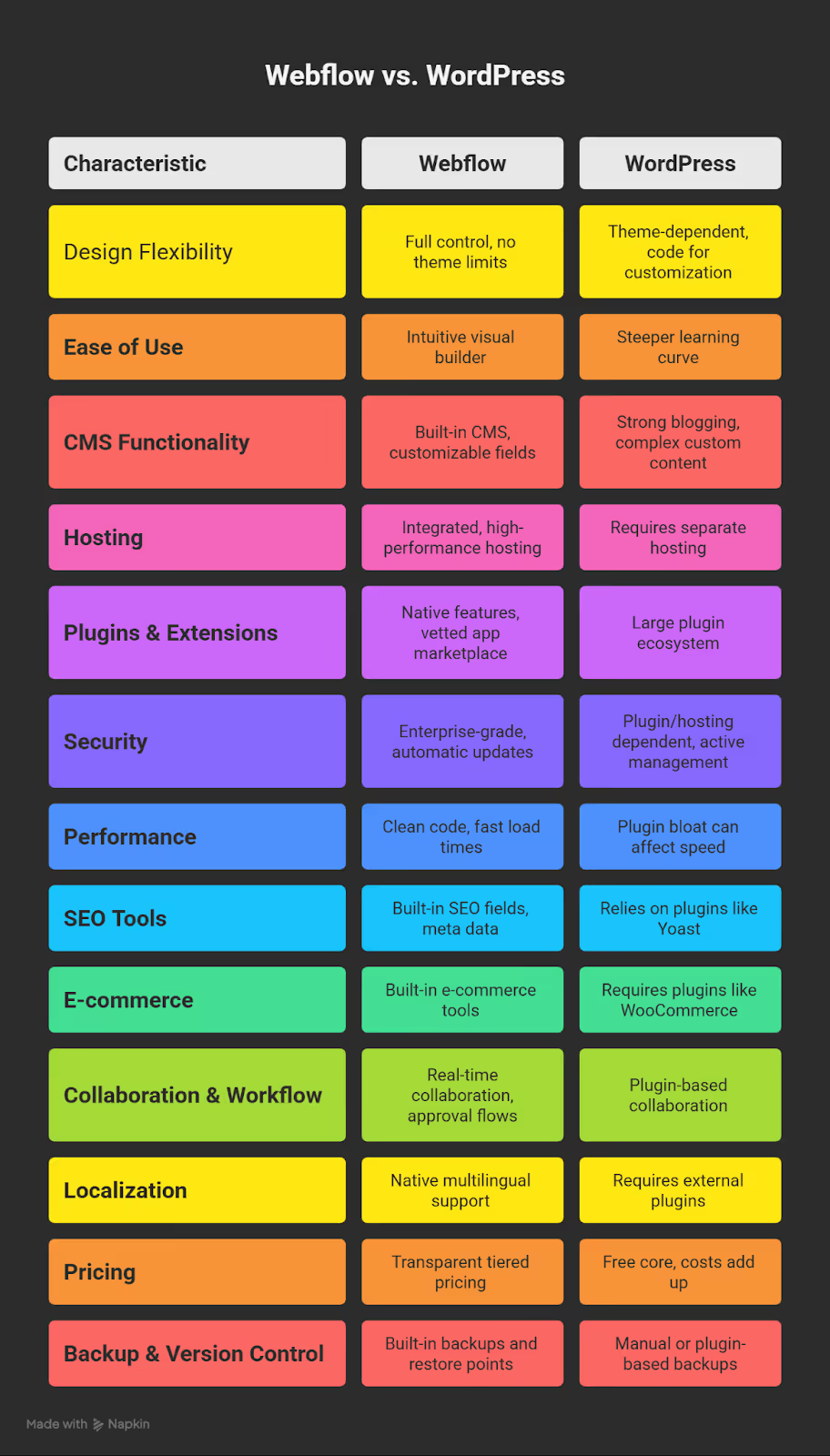
This table makes one thing abundantly clear: Webflow offers a more streamlined, all-in-one approach that reduces complexity and increases agility. While WordPress still has its place—especially for those already entrenched in its ecosystem—Webflow eliminates many of the technical hurdles that often slow down modern web teams.
One of the most defining differences between Webflow and WordPress lies in how they approach design. Webflow was built for designers from the ground up. WordPress, in contrast, was built for bloggers—and its evolution into a design tool has always relied on third-party solutions.
In Webflow, what you see is what you get. The Designer tool gives you full control over every element on the screen. Think of it as designing in Figma or Adobe XD, but with the added benefit that your designs become live, functional websites in real time. There's no need to hand off to a developer or guess how your layouts will look on the frontend. You're building exactly what users will experience.
On the other hand, WordPress relies heavily on pre-made themes and page builders like Elementor or Divi. While these tools bring drag-and-drop functionality to WordPress, they can introduce code bloat, slow down site performance, and limit creative freedom. You’re still designing within a boxed framework, unless you’re comfortable diving into PHP, CSS, or JavaScript.
This matters more than you might think. A Google study revealed that 53% of mobile users abandon websites that take longer than three seconds to load, making page speed critical for retaining mobile traffic. Bloated WordPress themes—especially those that rely on numerous plugins—can easily push sites past this threshold, risking both user engagement and SEO rankings. In contrast, Webflow automatically generates clean, optimized HTML, CSS, and JavaScript, leading to faster load times and improved performance straight out of the box.
Another key advantage of Webflow is consistency. Designers can build component libraries, reusable symbols, and global styles that maintain branding across a large site or across multiple pages. This is particularly useful for enterprises or agencies managing multiple properties.
In short, if design is central to your brand and you don’t want to compromise on vision, Webflow gives you the creative control and performance edge that WordPress struggles to match without technical workarounds.
When it comes to usability, the learning curve—and how quickly you can go from idea to live site—can make or break a platform. Both Webflow and WordPress offer paths to get started, but the experience for both beginners and professionals is vastly different.
Webflow offers a unified, visual interface that feels intuitive for designers, marketers, and even clients. The platform’s layout is structured similarly to design tools like Figma or Sketch, which means if you’re already familiar with digital design, getting up to speed is refreshingly fast. You design directly on the canvas, control styles through visual panels, and even manage your CMS content right on the page. There’s no disconnect between what you design and what gets built.
For new users, Webflow’s learning curve might seem steeper at first glance—especially for those unfamiliar with CSS concepts like box models or positioning. But the platform offsets this with its extensive library of tutorials on Webflow University, which has become an industry standard for onboarding new users. With structured lessons and walkthroughs, Webflow empowers users to learn foundational web principles while creating real websites—no code required.
WordPress, on the other hand, offers a quicker setup process, especially for simple sites. You can install a theme, add a few plugins, and launch in a matter of hours. For casual users and bloggers, this convenience is a huge plus. However, that simplicity often fades as soon as you want something beyond the basics.
The backend of WordPress is filled with menus, settings, plugin dependencies, and update warnings that can be overwhelming for non-technical users. Design and content are managed in separate areas, which can create confusion. And while tools like Elementor help bridge the usability gap with drag-and-drop editors, they’re essentially layers built on top of WordPress—not part of its core design experience.
Ultimately, Webflow offers a smoother, more cohesive experience for professionals and teams looking to scale, while WordPress might still appeal to beginners who want something fast and familiar—so long as they’re okay sacrificing design flexibility and long-term manageability.
Web design isn't just about making a site look good—it's about building a tailored experience that reflects your brand, engages your audience, and supports your business goals. And that kind of design requires real flexibility. So, which platform gives you more control under the hood?
Webflow offers an unmatched level of customization out of the box. You're not starting with a template; you're starting with a blank canvas. Whether you're building a landing page, a dynamic CMS-powered directory, or a multi-language enterprise site, Webflow lets you define every element—from layout and interactions to animations and responsiveness. You don't need to rely on external tools to fine-tune your design. You build exactly what you need and nothing you don’t.
One of Webflow’s standout features is its ability to create reusable components, global styles, and responsive designs across all devices with granular control. Want to adjust padding for tablet view only? You can. Want different animations on hover for desktop and mobile? No problem. Webflow supports advanced interactions like scroll effects and dynamic filters without any code or third-party integrations.
Contrast this with WordPress, where your flexibility is limited by the theme you choose. If you're using a prebuilt theme, you can usually change colors, fonts, and layout elements—but only within the boundaries of that theme’s design system. Going beyond those limits often means hiring a developer to write custom code or using a plugin like Elementor, which can add performance overhead and inconsistent styling.
And let’s talk about performance. With Webflow, the code generated behind the scenes is clean and semantic. WordPress themes, especially commercial ones packed with features, tend to generate bloated HTML and unnecessary scripts that slow down your site and create technical debt over time. That bloat doesn’t just hurt user experience—it affects SEO, bounce rates, and conversion potential.
Webflow’s flexibility also extends to CMS customization. You can define your own content structures (called "Collections") with any fields you need. Want to create a staff directory with bios, photos, and social links? Done. Need multiple blog categories with custom filters and page designs? Easy. You control both the data and the display logic—visually.
In short, Webflow’s design-first approach puts you in control. You’re no longer dependent on a patchwork of themes and plugins. You’re designing the web as it should be—clean, efficient, and uniquely yours.
In the fast-paced digital landscape, time isn’t just money—it’s momentum. How quickly you can go from concept to live site can affect campaign launches, product rollouts, and your ability to iterate based on real user data. This is where the choice between Webflow and WordPress starts to impact not just your design process, but your business velocity.
Webflow drastically shortens the development cycle by collapsing design, prototyping, and deployment into a single environment. Designers can work in the Webflow Designer and publish directly to the web, no handoff or development bottleneck required. In agencies and internal teams, this means marketing departments can launch new pages and run A/B tests without waiting on engineering resources.
Features like reusable components, custom layouts, and content-rich CMS collections speed up repetitive tasks. Combined with the platform’s live preview, instant publishing, and version control, Webflow becomes a powerful tool for agile workflows.
WordPress, by contrast, often splits the process between design, development, and deployment. Designers create mockups in tools like Figma or Photoshop, developers translate those mockups into PHP themes or work within limited drag-and-drop environments, and then additional time is spent configuring hosting, optimizing performance, and testing across plugins. Even small changes can trigger a domino effect of compatibility checks and manual updates.
While you can speed up development with premade themes and plugins, this typically comes at the expense of design control or technical debt. And if a plugin breaks during an update—which is not uncommon—you could face hours of emergency debugging just to get your site back online.
For businesses that want to iterate frequently, test new landing pages, or scale their web operations efficiently, Webflow’s streamlined build-and-deploy workflow is hard to beat. It removes friction, reduces dependency on developers, and enables teams to move at the speed of creativity.
At the heart of most modern websites lies a content management system (CMS). Whether you're publishing blog posts, updating product pages, or managing a staff directory, your CMS defines how smoothly that content flows from concept to publication. Both WordPress and Webflow offer CMS features—but their approaches are fundamentally different.
WordPress was born as a blogging platform, and its CMS roots still show. It’s exceptionally good at managing posts, categories, and tags. If your website is primarily text-driven—like a blog or news site—WordPress can be a solid choice. Its interface is familiar, and the post editor has evolved over time to include Gutenberg blocks, which offer modular content building.
However, the moment you step outside traditional blog structures, things get more complicated. Creating custom content types (such as real estate listings, team members, or case studies) often requires third-party plugins like Advanced Custom Fields (ACF) or custom PHP templates. That can introduce more overhead, more maintenance, and more opportunities for errors.
By contrast, Webflow’s CMS is built for flexibility from the start. Instead of predefined content types, you create custom "Collections" tailored to your project—like Projects, Recipes, Events, or Team Bios. Each Collection can have any number of custom fields: images, text, dates, URLs, even rich media. Once your structure is defined, displaying that content visually is seamless—you just drag and bind fields to your design, without a line of code.
What makes Webflow especially powerful is its on-page editing. Marketers and content managers can log in, click on any text or image, and update it directly within the context of the live page. No need to dig through a backend dashboard or decipher menu options. The result is faster updates, fewer errors, and more autonomy for non-technical users.
Webflow also brings modern features like dynamic filtering, reference fields (for creating relationships between Collections), and conditional visibility. This allows for highly customized and interactive content without relying on third-party tools.
On the backend, WordPress CMS can become cluttered—especially with multiple plugins trying to do the same thing. This can affect site speed and create friction in workflows. Webflow’s CMS is visually cleaner, less prone to plugin conflicts, and optimized for teams that want to focus on content—not troubleshooting.
For agencies and brands that need to scale content operations without scaling complexity, Webflow offers a smoother, more customizable, and user-friendly CMS experience.
Website performance isn’t just a technical metric—it’s a user experience imperative. According to research from Google, 53% of mobile users abandon a site that takes longer than three seconds to load (Think with Google). In the battle of Webflow vs WordPress, performance is a key differentiator—and Webflow comes out ahead thanks to its optimized code structure, global CDN, and integrated hosting that prioritizes speed and stability.
WordPress sites often start out fast, but performance can quickly deteriorate as themes, plugins, and third-party scripts stack up. Each plugin typically adds its own CSS, JavaScript, and database queries, many of which load sitewide regardless of whether they’re needed. The result is code bloat that slows down load times, increases server requests, and negatively affects your SEO and user experience.
Even something as basic as image optimization or caching often requires a separate plugin in WordPress. And unless you’re using a managed hosting provider with built-in performance tools, you're responsible for optimizing and securing everything yourself—from CDN integration to database cleanups.
In contrast, Webflow is designed from the ground up to deliver high-performance websites with minimal effort. Every site is hosted on Webflow’s global infrastructure, powered by Amazon Web Services (AWS) and Fastly CDN, which automatically distributes your content closer to users around the world. The platform includes built-in asset compression, lazy loading, auto-caching, and SSL encryption—all by default.
But where Webflow really shines is in the code it produces. Because it’s a visual development tool—not a drag-and-drop template system—it generates clean, semantic HTML, CSS, and JavaScript. There’s no unnecessary fluff or bloated dependencies. This leads to faster page loads, better Google Core Web Vitals scores, and a stronger foundation for technical SEO.
Webflow also supports advanced performance tools like custom preloading, meta tag control, and structured data integration—all without the need for external plugins.
If you're building a website where speed and technical quality matter—and they should—Webflow’s architecture provides a serious advantage over WordPress. It’s not just about avoiding slow load times; it's about building lean, scalable, and future-proof websites that perform under pressure.
One of WordPress’s biggest selling points—and, paradoxically, its Achilles' heel—is its massive plugin ecosystem. With over 59,000 plugins available on the official WordPress repository, it seems like there’s a tool for everything. Want to add contact forms, popups, SEO optimization, or e-commerce? There’s a plugin for that.
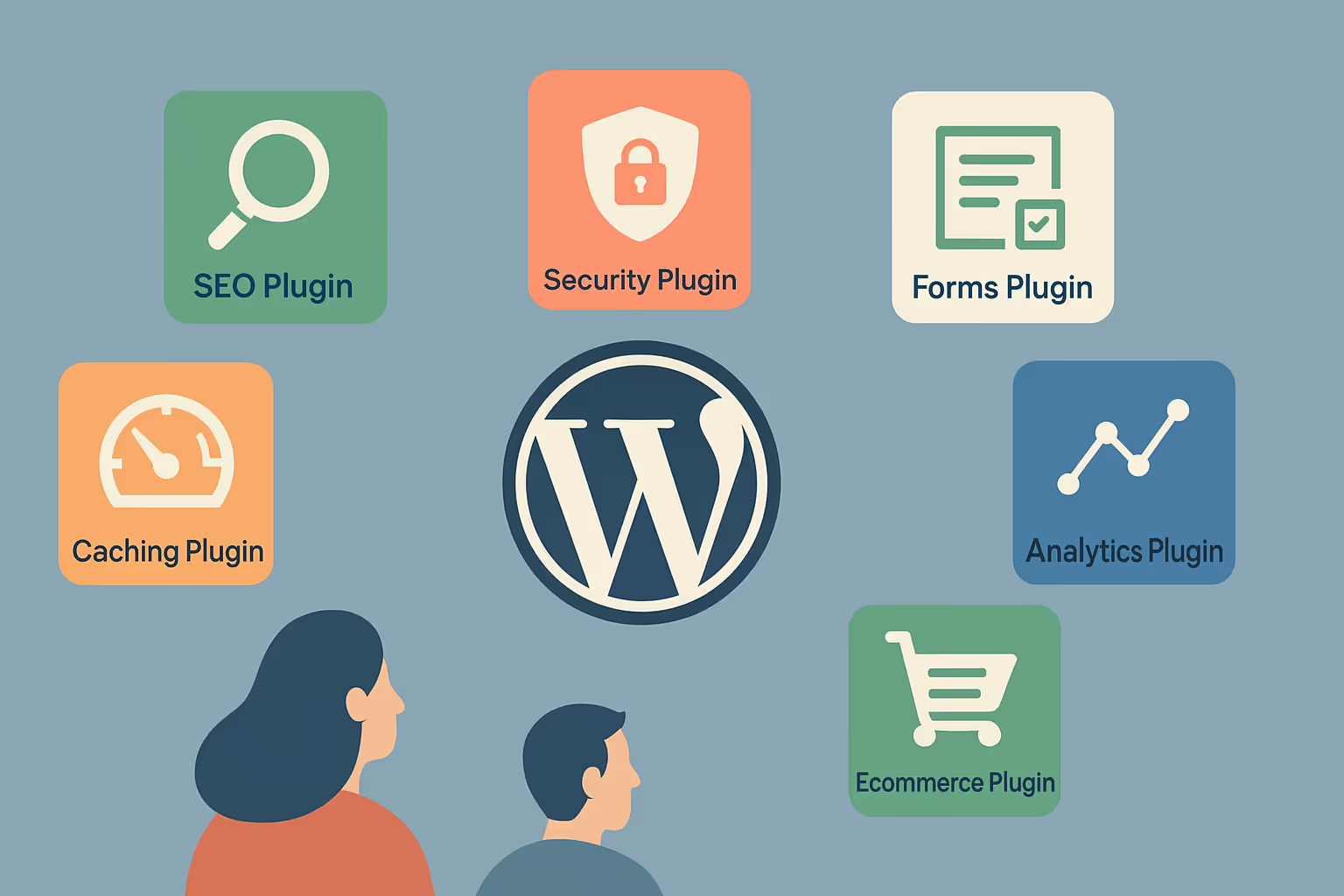
But here’s the catch: this plugin dependency comes at a cost. Every plugin is a piece of third-party code that can conflict with others, require frequent updates, or create security vulnerabilities. In fact, a Sucuri report noted that over 90% of hacked CMS websites in recent years were WordPress sites—often due to insecure plugins.
Plugins also tend to slow things down. Many load unnecessary assets across your entire site, even if they’re only needed on a single page. And unless you’re diligent about updates and version compatibility, you risk downtime or broken features. Managing a WordPress site with 10+ plugins becomes more of a DevOps job than a marketing or design task.
In contrast, Webflow minimizes reliance on third-party tools by offering most essential features natively. Need SEO management, animations, form handling, responsive controls, or CMS logic? All built in. You don’t need to sift through a plugin directory or worry about patching bugs from outdated modules.
That said, Webflow isn’t entirely closed off from integrations. The Webflow App Marketplace features vetted apps that connect your site with tools like Zapier, HubSpot, Google Analytics, Memberstack, and Mailchimp. These apps are carefully tested to ensure compatibility and security. And for deeper integrations, Webflow offers robust APIs and the ability to embed custom code.
This native-first approach means fewer moving parts, less risk, and a much smoother experience for teams that want to build, launch, and iterate quickly.
Ultimately, while WordPress gives you access to a vast universe of plugins, Webflow gives you a tightly integrated toolkit that performs better and requires less maintenance. If you're tired of the plugin patchwork—or have experienced the chaos of a single update breaking your site—Webflow’s native simplicity is a breath of fresh air.
E-commerce is no longer optional—it’s a necessity. Whether you're a solo entrepreneur launching a niche product or a growing brand scaling globally, your platform needs to do more than just "sell stuff." It must provide seamless customer experiences, branding flexibility, and reliable performance. Both WordPress and Webflow support e-commerce, but they do so in very different ways.
WordPress typically handles e-commerce through plugins—most notably WooCommerce, which powers over 30% of all online stores. WooCommerce is powerful and customizable, offering a robust set of features for product management, shipping options, taxes, and payment gateways. It integrates well with third-party services like Stripe, PayPal, and Mailchimp.
However, like many WordPress solutions, WooCommerce is plugin-heavy. You’ll often need additional plugins for upsells, reviews, analytics, advanced shipping rules, and custom product fields. This plugin stacking not only affects site performance, but also increases your dependency on regular updates and technical troubleshooting.
Design-wise, WooCommerce depends on your theme’s limitations or additional page builders like Elementor to gain more control. It’s possible to build a great-looking online store—but doing so typically involves developer hours or third-party design tools.
Webflow E-commerce, on the other hand, offers a more integrated and design-centric approach. You build your store using the same visual interface as the rest of your site, which means total control over product pages, checkout flows, and animations. There’s no disconnect between your product design and your brand identity—everything lives within the same visual language.
Want to create a custom animated product gallery, dynamic filters, or a fully branded checkout experience? With Webflow, you can design it visually—no coding or plugins required. Product categories, inventory, variant options, and discounts are built directly into the CMS, and Webflow supports Stripe and PayPal for secure payments.
What Webflow lacks in plugin extensibility, it makes up for in performance and simplicity. The entire system is built for clean code, fast load times, and secure checkout experiences. You also have the option to integrate external e-commerce solutions like Shopify using Dynamic Embeds if you need more complex functionality while still taking advantage of Webflow’s frontend flexibility.
For design-forward brands and businesses that prioritize UX and speed, Webflow E-commerce offers a refreshing alternative to the complexity of WooCommerce. You won’t just be managing products—you’ll be crafting digital storefronts that convert.
Search engine optimization isn’t just about keywords—it’s about how your entire website is structured, rendered, and understood by search engines. From metadata and sitemaps to site speed and schema markup, every detail affects your visibility on Google. In the comparison of Webflow vs WordPress, both platforms offer solid SEO potential—but take very different paths to get there.
WordPress has long been favored by SEO professionals, largely because of powerful plugins like Yoast SEO and Rank Math. These tools allow users to manage title tags, meta descriptions, XML sitemaps, breadcrumbs, and more—all from within the dashboard. However, these are third-party solutions, and they come with their own update cycles, compatibility issues, and potential for performance drag.
Additionally, optimizing for technical SEO in WordPress often involves installing multiple plugins: one for redirects, another for schema markup, another for image optimization, and so on. While these plugins are highly customizable, they contribute to code bloat and slow page speeds—which ironically undercut your SEO performance.
Webflow, on the other hand, takes a built-in approach to SEO—integrating most of what you need directly into the platform. You can set meta titles, descriptions, open graph data, canonical tags, and indexing controls for every page and collection item—all without needing a plugin. Webflow auto-generates XML sitemaps, supports SSL certificates, and enables 301 redirects through a simple interface.
Because the platform is inherently fast, clean-coded, and hosted on a global CDN, your site starts with a strong technical SEO foundation. Webflow also gives you control over heading hierarchy, alt text for images, and semantic HTML—all key elements in improving accessibility and crawlability.
A case study by digital agency Fortnight revealed that migrating a site from WordPress to Webflow improved page load speed by over 40%—and organic traffic increased as a result. With search engines like Google increasingly favoring fast, well-structured pages (see Core Web Vitals), that kind of performance improvement is not just technical—it’s strategic.
While WordPress may still offer more nuanced control for hardcore SEO users via plugins, Webflow provides streamlined, performance-first SEO tools that are easy to use, inherently optimized, and scalable with your site. You don’t have to piece together five different plugins to get the basics right—you just build it right from the start.
As businesses scale internationally, the ability to localize a website for different regions, languages, and cultural contexts becomes essential. Whether you're serving a bilingual market or launching in multiple countries, your web platform must support nuanced content delivery—and do it efficiently.
WordPress has been around long enough to support multilingual websites, but it’s not built into the core system. To manage translations, you’ll need third-party plugins like WPML, Polylang, or TranslatePress. These tools do offer deep localization features, such as translating custom post types, menus, and taxonomies—but they come with additional complexity and cost.
Using plugins for localization also means more moving parts. Language switches may require duplicate pages, compatibility checks across plugins, and custom code to control layout and visibility. And because these are not native to the WordPress core, they can occasionally conflict with theme or plugin updates.
Webflow, by contrast, now offers native localization tools that are deeply integrated into the platform’s core. Instead of relying on workarounds or external systems, you can manage regional versions of your content—changing not only text and language but also images, layout visibility, links, and even page structure.
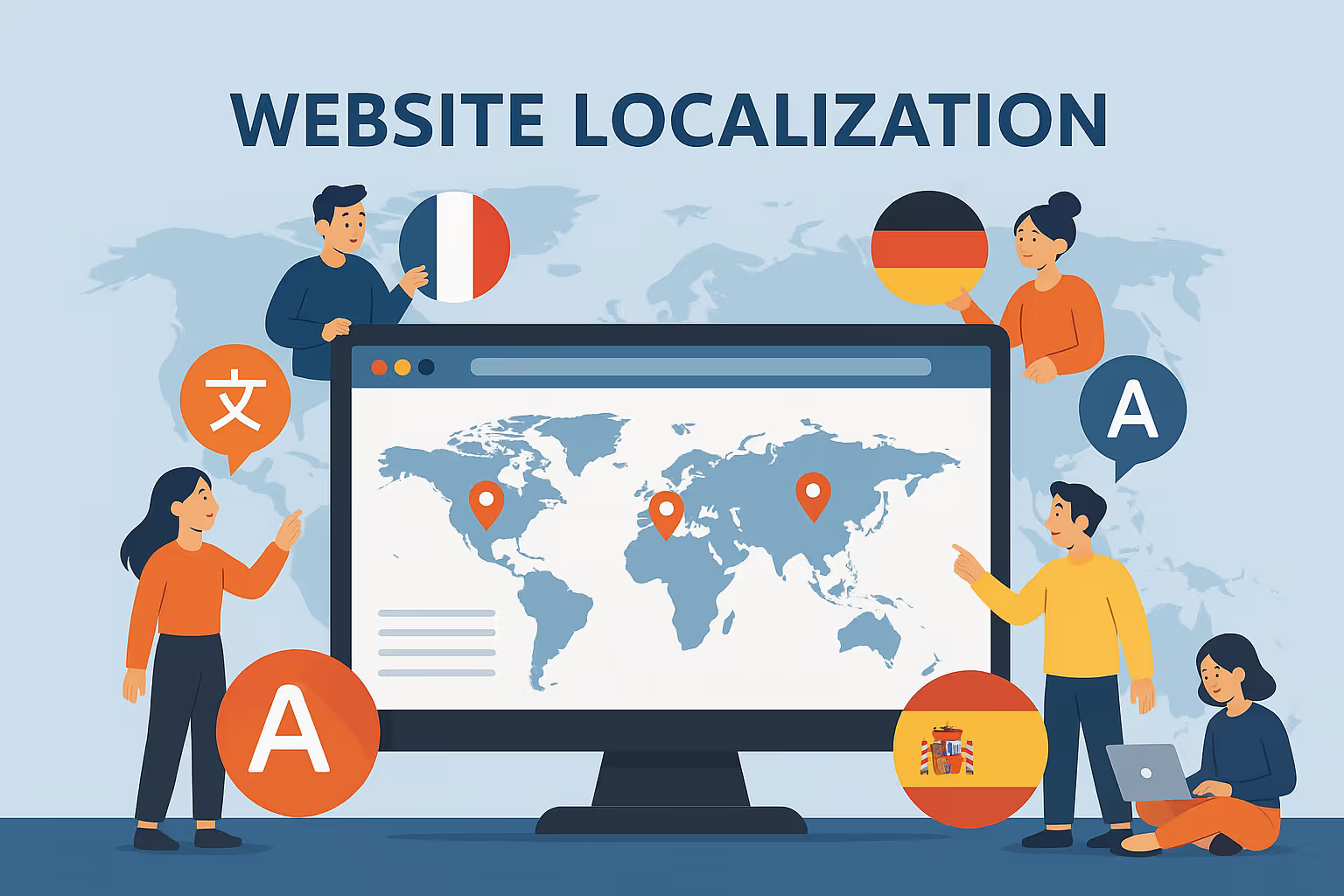
Want to show a different homepage banner for users in Germany? Or tailor product descriptions in Spanish without duplicating the entire site? Webflow allows for contextual localization through its visual interface, making these changes fast and seamless.
The localization features support right-to-left languages, language-specific SEO settings, and domain routing (e.g., fr.yoursite.com or yoursite.com/de/). While these tools are part of Webflow’s premium site plans, they’re enterprise-grade and built for scale.
From a workflow perspective, Webflow’s localization tools are also designed for collaboration. Marketers, translators, and designers can all work within the same interface, reducing the back-and-forth often required in WordPress setups.
For growing brands with global ambitions, Webflow offers a more cohesive and powerful approach to multilingual site management. It’s not just about translating text—it’s about delivering customized user experiences to each audience segment with precision and ease.
As teams scale, collaboration becomes more than a convenience—it’s a necessity. Design, development, marketing, and content teams must work together efficiently to produce, review, and publish website content without bottlenecks. This is where the difference between Webflow and WordPress becomes particularly pronounced.
WordPress, as an open-source platform, offers multi-user access with role-based permissions. You can assign editors, authors, and admins, and extend these roles using plugins like Members or User Role Editor. But that’s often where native collaboration ends.
Real-time editing, branching, approvals, and version control are not built into WordPress by default. You may find yourself using Google Docs to draft content, Slack or email for feedback, and another platform entirely for approvals. This siloed workflow can slow down publishing and introduce errors—especially on larger, high-velocity teams.
Some premium plugins and enterprise tools attempt to fill the gap, but they’re typically external add-ons with separate interfaces and learning curves. Managing drafts, tracking revisions, or testing new layouts often means creating staging environments and pushing changes manually.
Webflow, on the other hand, was designed for collaborative workflows from the ground up. Its cloud-based infrastructure supports real-time editing, content approvals, and version control within the platform—no external tools required.
One standout feature is page branching, which allows designers and developers to create alternate versions of a page, make changes, and merge those changes into the main site only when ready. It’s a workflow similar to Git but made visual and accessible, perfect for design teams iterating on new ideas or A/B testing layouts.
Marketers and content teams can also benefit from Webflow’s on-page editor. Instead of navigating through dashboards, they can log in and edit directly on the live page—seeing how their updates affect the layout in real time. Custom roles, granular access settings, and audit logs ensure content governance without compromising agility.
Webflow also integrates seamlessly with tools like Figma, allowing design systems to flow from prototype to production without translation loss. And because everything lives in the same ecosystem—CMS, design, hosting, analytics—teams can work faster, smarter, and with fewer handoffs.
For enterprises and agencies managing complex websites with large teams, Webflow delivers the kind of streamlined, collaborative environment that WordPress struggles to provide without a patchwork of plugins.
Security is one of the most critical—yet often overlooked—factors in choosing a web platform. A secure website not only protects user data and business assets, but also maintains customer trust and search engine rankings. In the match-up of Webflow vs WordPress, this category exposes one of their starkest contrasts.
WordPress, being open-source and widely used, is naturally a bigger target for hackers. It’s not that WordPress itself is insecure—it’s that its plugin-dependent architecture introduces significant vulnerabilities. According to the 2023 Sucuri Website Threat Report, over 90% of hacked CMS-based websites were built on WordPress, with outdated or poorly coded plugins being the primary entry point.
WordPress requires constant vigilance. You’re responsible for monitoring plugin updates, applying security patches, configuring firewalls, managing SSL certificates, and setting up backups. Hosting providers often offer some protection, but the burden largely falls on the site owner or developer.
To harden security, many users rely on plugins like Wordfence or Sucuri Security, which themselves require updates and configuration. And because WordPress allows FTP and database access, poor server practices can expose sites to even greater risk.
Webflow takes a very different approach—security is baked in. As a closed platform hosted on Amazon Web Services (AWS), Webflow provides enterprise-grade security without any technical overhead. Your site is protected by default with SSL, global DDoS protection, two-factor authentication, and continuous automatic updates.
You don’t have to worry about plugin conflicts, server misconfigurations, or exposed login URLs. And because Webflow is a managed platform, it handles hosting, backups, and sandboxed updates behind the scenes, ensuring there’s no downtime during maintenance.
Webflow also supports SOC 2 Type II compliance, a rigorous standard required by enterprises managing sensitive data. For businesses that must meet regulatory or industry-specific security requirements, this level of compliance offers peace of mind.
In addition to automatic backups and version history, Webflow allows users to restore their site to any previous state with just a few clicks. Whether you’re recovering from a content mistake or rolling back an experiment, there’s no need for manual intervention or third-party tools.
In short, Webflow offers security as a service—while WordPress demands constant maintenance and risk management. If your team lacks dedicated IT support, or if you simply want to focus on growing your business rather than patching code, Webflow’s secure-by-design approach is a clear advantage.
Budget plays a major role in platform decisions—but cost isn't always what it seems on the surface. While WordPress is often viewed as the cheaper option, the long-term reality can be more complex. When comparing Webflow vs WordPress, it's not just about the price tag—it’s about total cost of ownership.
WordPress is technically free to install and use. As open-source software, there’s no licensing fee. But building a functioning site involves a lot more than just downloading WordPress. You’ll need:
For simple sites, this might add up to $100–$300 per year. But as the site scales or becomes mission-critical, expenses climb rapidly. E-commerce, custom features, enterprise security, or multilingual support can push costs into the thousands—especially when you factor in development time or hiring freelancers to troubleshoot plugin conflicts or site outages.
Webflow, on the other hand, uses a transparent subscription model. You pay based on your site’s needs, and almost everything is included—hosting, CMS, SEO tools, backups, SSL, and even customer support. Plans start at $14/month for basic websites and scale up to enterprise-grade solutions with advanced collaboration, staging environments, and localization.
What makes Webflow stand out is its all-in-one nature. You’re not piecing together a tech stack—you’re investing in a cohesive system where design, hosting, performance, and security are tightly integrated. This reduces the need for costly plugins, third-party tools, or ongoing maintenance contracts.
And because Webflow allows non-technical team members to manage content, design pages, and launch updates without a developer, it saves not just money—but time and opportunity cost. A marketing team that can launch campaigns independently avoids the bottlenecks of traditional dev workflows.
For businesses that value agility, reliability, and brand control, Webflow offers predictable pricing with fewer hidden costs, making it a smarter long-term investment.
While Webflow is clearly gaining ground as a powerful WordPress alternative, there are still valid reasons someone might choose one platform over the other. Your decision should ultimately come down to your business model, technical resources, and goals.
That said, even many WordPress-heavy teams are beginning to adopt Webflow for microsites, landing pages, and marketing campaigns—projects that demand speed, creative flexibility, and fewer technical dependencies.
As you weigh the pros and cons, remember that choosing a platform isn't just a technical decision—it’s a strategic one. And increasingly, brands that want to differentiate and scale quickly are finding Webflow to be the right tool for the job.
Yes, especially for teams that want performance without plugins. Webflow has built-in SEO tools—meta tags, schema support, alt text, sitemaps, clean code—that are accessible directly in the interface. Unlike WordPress, you don’t need plugins like Yoast to optimize your site. With faster load times and native optimization, Webflow gives you a strong technical SEO foundation out of the box.
Absolutely. While there's no one-click migration, the process is straightforward: export your content as a CSV, then import it into Webflow Collections. Design and layout elements need to be rebuilt visually, but this is often a positive—since you’ll be designing with more freedom and performance in mind. Webflow also provides detailed migration guides and tools to help with the transition.
Yes, Webflow includes built-in e-commerce features that allow full design control over product pages, carts, and checkout experiences. You can manage inventory, track orders, offer discount codes, and integrate with Stripe and PayPal. While it may not yet match WooCommerce’s plugin ecosystem, Webflow is ideal for design-driven brands looking to build highly customized storefronts.
For designers and non-technical users, yes. Webflow’s visual interface and on-page editing make it easier to build and update sites without coding. WordPress has a steeper learning curve, especially when managing plugins or creating custom content types. Webflow simplifies that entire experience while offering more creative control.
Webflow includes managed hosting on AWS with every plan, which means fast, secure, and reliable delivery without setup. WordPress requires you to choose a separate hosting provider and manage caching, CDN integration, and security updates yourself—or pay extra for managed WordPress hosting.
Absolutely. Webflow enables agencies and independent creatives to work faster, eliminate developer bottlenecks, and deliver pixel-perfect websites with less back-and-forth. At Ballistic Design Studio, Webflow is the go-to platform for crafting high-impact websites that clients can manage easily without sacrificing design integrity.
Choosing between Webflow and WordPress isn’t about finding a winner—it’s about finding the platform that aligns with your vision, team structure, and long-term goals. But if your priority is creative control, speed, security, and scalability—Webflow is increasingly the smarter choice.
WordPress has had an impressive run as the world’s go-to CMS. It’s flexible, widely supported, and still a solid option for basic blogs and small content sites. However, its plugin-heavy ecosystem, fragmented workflow, and maintenance demands make it a less attractive option in a world where speed and agility are everything.
Webflow represents a modern, integrated approach to web design and development. It allows teams to build faster, launch smarter, and scale without sacrificing design quality or performance. With built-in SEO tools, enterprise-level security, and unparalleled visual editing capabilities, it’s no surprise that agencies, startups, and enterprise brands alike are migrating in droves.
If you're ready to elevate your web presence with a platform that puts design and performance first, Webflow is worth the switch. And if you’re looking for experts to help guide that transition or craft your next high-performing site, look no further than Ballistic Design Studio—where form meets function, beautifully.

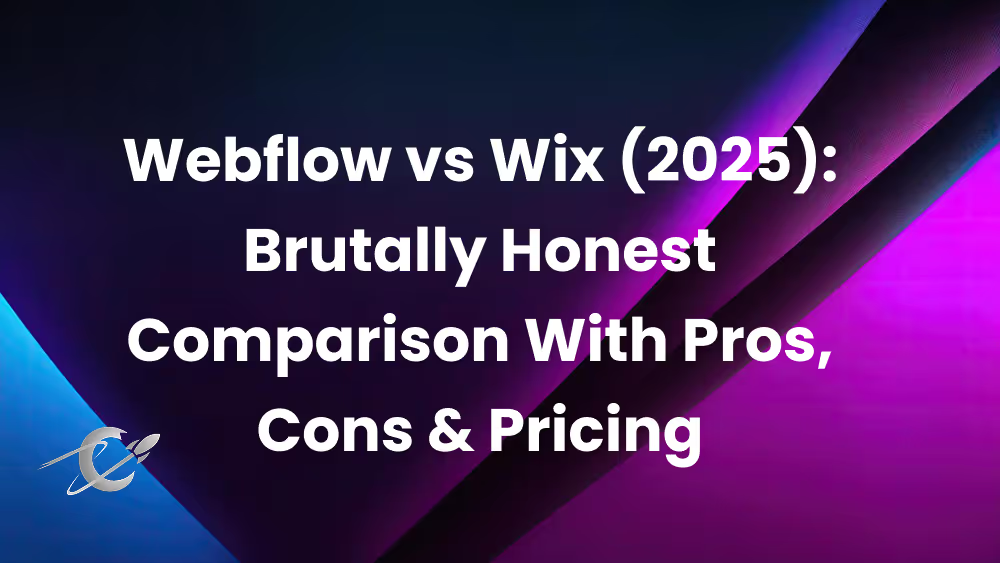
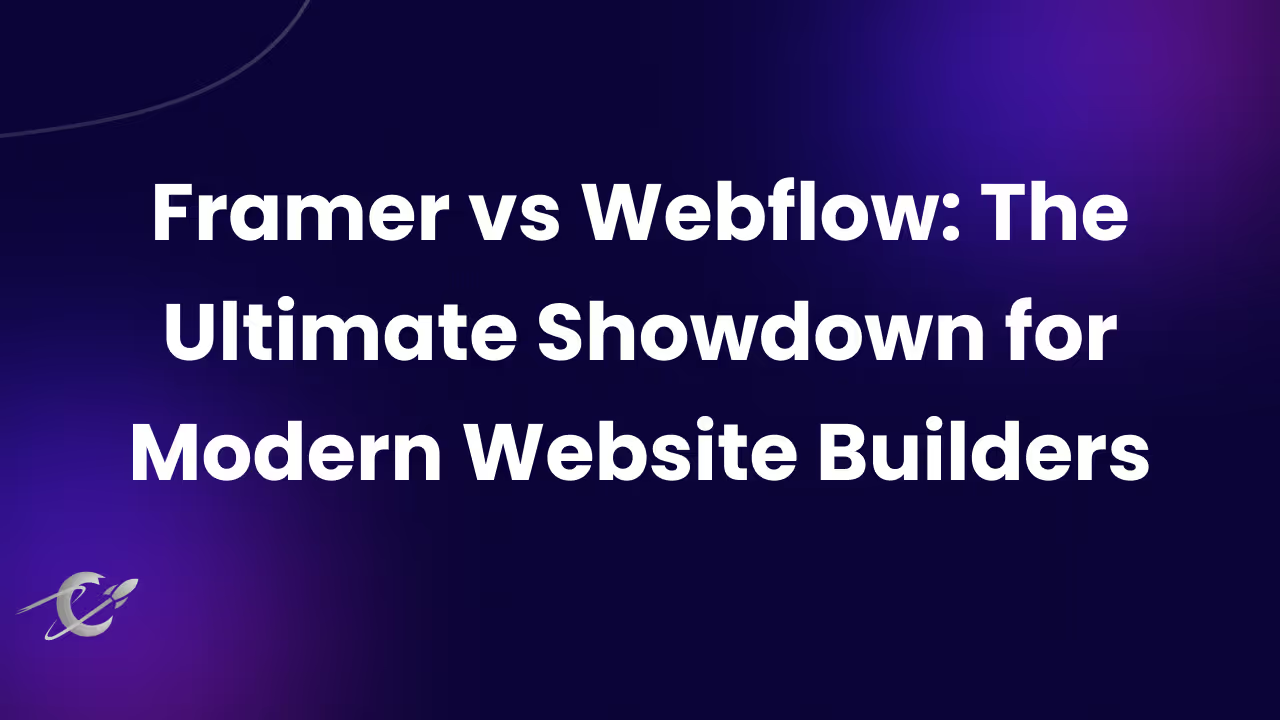
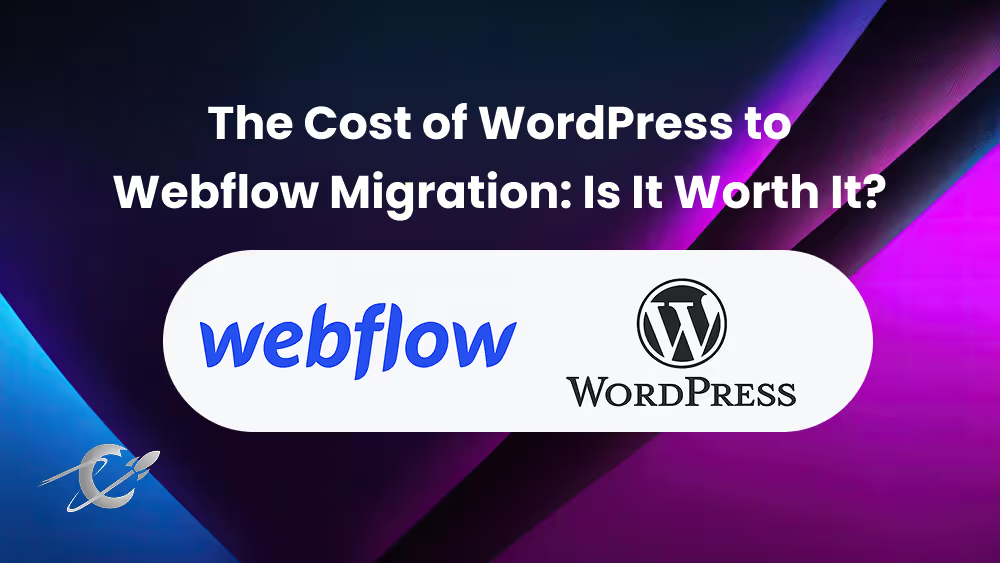
Only valid for-